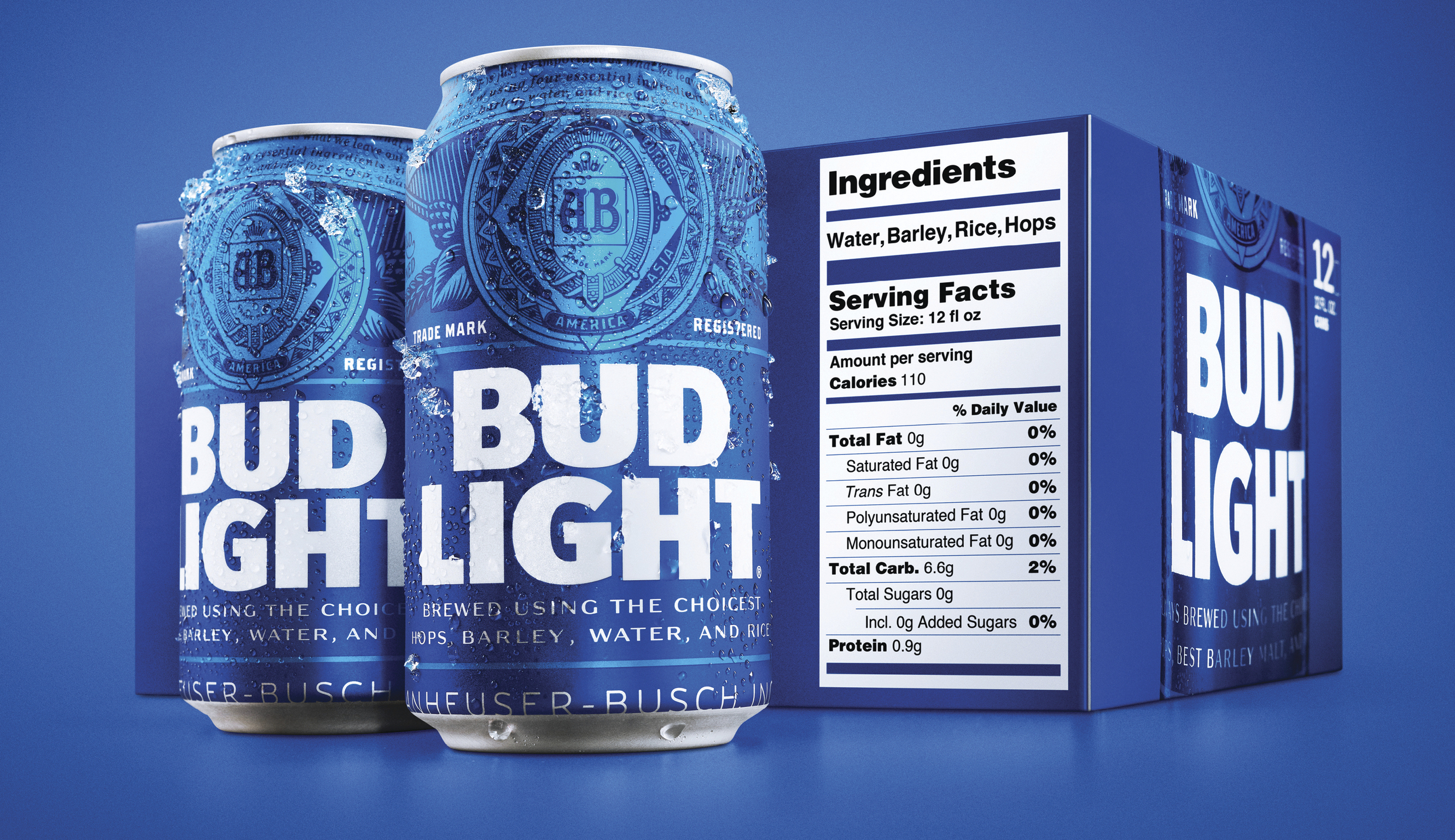
Bud Light debuts bigger nutrition labels
DETROIT (AP) — Beer drinkers can’t claim blissful ignorance for much longer.
Starting next month, packages of Bud Light will have prominent labels showing the beer’s calories and ingredients as well as the amount of fat, carbohydrates and protein in a serving.
Bud Light is likely the first of many to make the move. The labels aren’t legally required, but major beer makers agreed in 2016 to voluntarily disclose nutrition facts on their products by 2020.
Many brands, including Corona Light, Guinness, Heineken and Coors Light, already have calories and other nutrition information on their bottles or packaging. But it’s in small type, or hidden on the bottom of the six-pack, and ingredients aren’t listed.
Bud Light went with a big, black-and-white label, similar to the ones required by the U.S. Food and Drug Administration on packaged foods. At the top, Bud Light lists its four ingredients: water, barley, rice and hops. Below that, it shows the calories in a 12-ounce bottle or can (110) and other facts. Bud Light contains 2 percent of the recommended daily amount of carbohydrates, for example.
“We want to be transparent and give people the thing they are used to seeing,” said Andy Goeler, vice president of marketing for Bud Light.
Individual bottles and cans of Bud Light won’t have the full labels, but they’ll continue to have some nutrition information printed in small type.
Goeler said the brand’s research shows younger drinkers, in particular, want to know what’s in their beer.
“They have grown up really in tune to ingredients,” he said.
Goeler said he didn’t know when other brands owned by Bud Light parent Anheuser-Busch — including Michelob and Stella Artois — would adopt bigger nutrition labels.
But the question is: Will such labels make a difference in the choices consumers make? At least one study suggests they won’t.
Researchers at Cornell University and Louisiana State University tracked what happened when diners were given menus with calorie counts. It found that diners who knew the calorie counts ordered lower-calorie appetizers and entrees, but the calorie counts had little impact on orders for drinks and desserts.
John Cawley, an economics professor at Cornell and one of the authors of the study, said diners seemed to respond most to information they didn’t already know. They were probably surprised by the calories in some appetizers, for example, but already knew the general range for a glass of beer or wine.
Cawley said it’s telling that a light beer would be the most forthcoming about its ingredients and nutrition information. Bud Light’s sibling, Budweiser, has 35 more calories and four additional grams of carbohydrates, according to the brand’s web site.
Ultimately, the biggest changes may come from manufacturers themselves, not consumers, Cawley said. Since nutrition labels were first required in the early 1990s, companies have competed to look healthier or remove objectionable ingredients like trans fats.
“That is actually the biggest public health victory of all,” Cawley said.
The Western Journal has not reviewed this Associated Press story prior to publication. Therefore, it may contain editorial bias or may in some other way not meet our normal editorial standards. It is provided to our readers as a service from The Western Journal.
Truth and Accuracy
We are committed to truth and accuracy in all of our journalism. Read our editorial standards.
Advertise with The Western Journal and reach millions of highly engaged readers, while supporting our work. Advertise Today.












